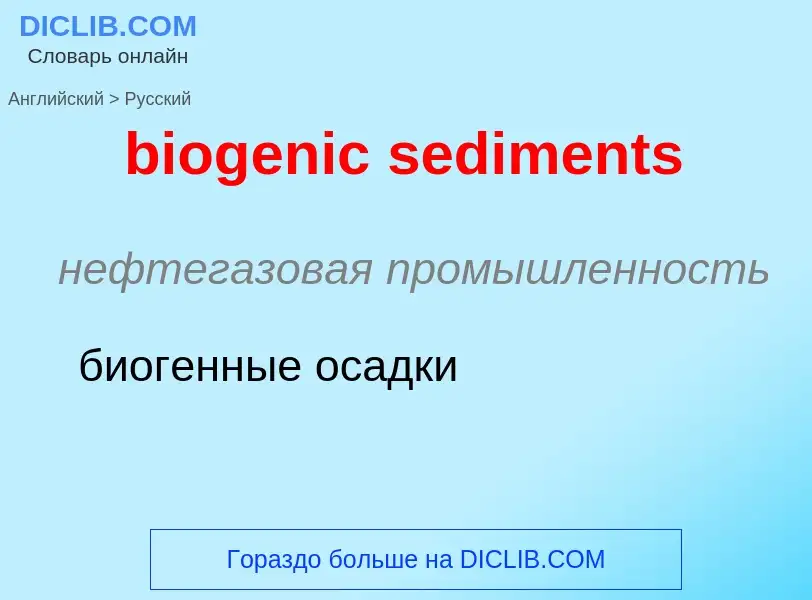Vertaling en analyse van woorden door kunstmatige intelligentie ChatGPT
Op deze pagina kunt u een gedetailleerde analyse krijgen van een woord of zin, geproduceerd met behulp van de beste kunstmatige intelligentietechnologie tot nu toe:
- hoe het woord wordt gebruikt
- gebruiksfrequentie
- het wordt vaker gebruikt in mondelinge of schriftelijke toespraken
- opties voor woordvertaling
- Gebruiksvoorbeelden (meerdere zinnen met vertaling)
- etymologie
biogenic sediments - vertaling naar russisch
нефтегазовая промышленность
биогенные осадки
медицина
вазоактивный амин
медицина
биогенный амин
Definitie
Wikipedia

Biogenic silica (bSi), also referred to as opal, biogenic opal, or amorphous opaline silica, forms one of the most widespread biogenic minerals. For example, microscopic particles of silica called phytoliths can be found in grasses and other plants.
Silica is an amorphous metal oxide formed by complex inorganic polymerization processes. This is opposed to the other major biogenic minerals, comprising carbonate and phosphate, which occur in nature as crystalline iono-covalent solids (e.g. salts) whose precipitation is dictated by solubility equilibria. Chemically, bSi is hydrated silica (SiO2·nH2O), which is essential to many plants and animals.
Diatoms in both fresh and salt water extract dissolved silica from the water to use as a component of their cell walls. Likewise, some holoplanktonic protozoa (Radiolaria), some sponges, and some plants (leaf phytoliths) use silicon as a structural material. Silicon is known to be required by chicks and rats for growth and skeletal development. Silicon is in human connective tissues, bones, teeth, skin, eyes, glands and organs.


![illumination]] on a [[light microscope]]. Diatomaceous earth is made up of [[diatom]] [[cell wall]]s, an example of biogenic [[silica]]. Silica is synthesised in the diatom cell by the [[polymerisation]] of [[silicic acid]]. This image of diatomaceous earth particles in water is at a scale of 6.236 pixels/[[μm]], the entire image covers a region of approximately 1.13 by 0.69 mm. illumination]] on a [[light microscope]]. Diatomaceous earth is made up of [[diatom]] [[cell wall]]s, an example of biogenic [[silica]]. Silica is synthesised in the diatom cell by the [[polymerisation]] of [[silicic acid]]. This image of diatomaceous earth particles in water is at a scale of 6.236 pixels/[[μm]], the entire image covers a region of approximately 1.13 by 0.69 mm.](https://commons.wikimedia.org/wiki/Special:FilePath/Diatomaceous Earth BrightField.jpg?width=200)
